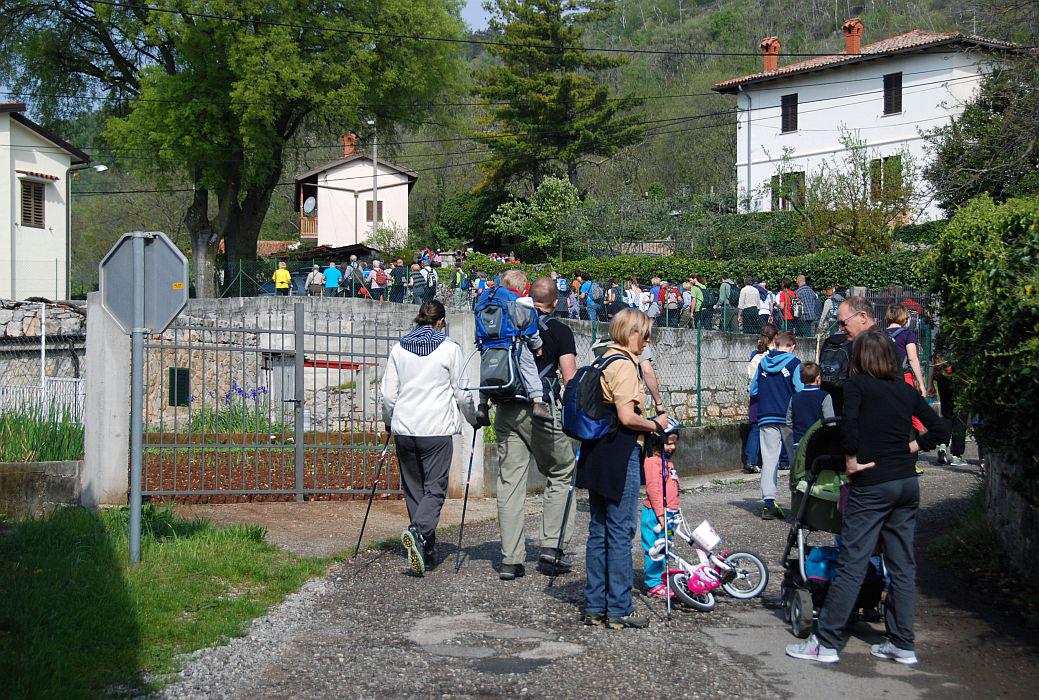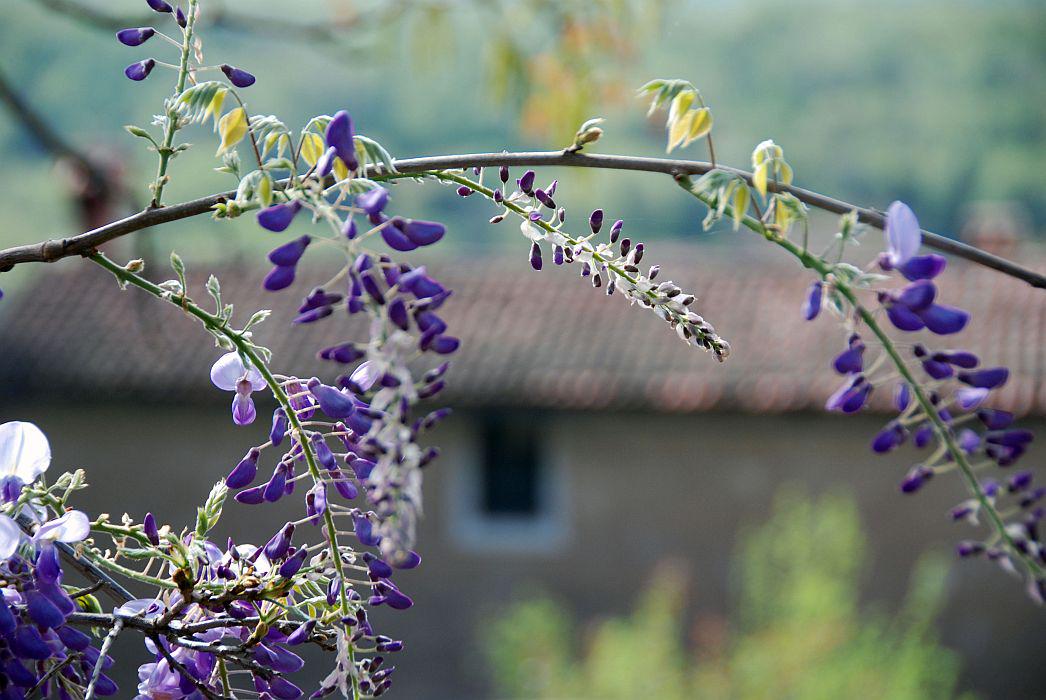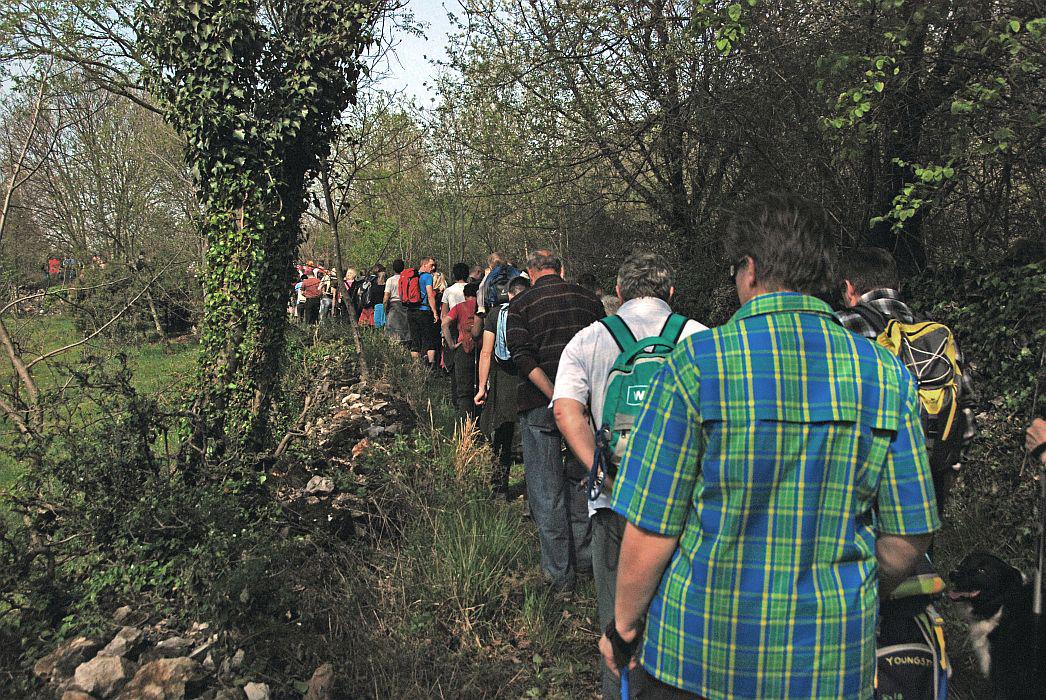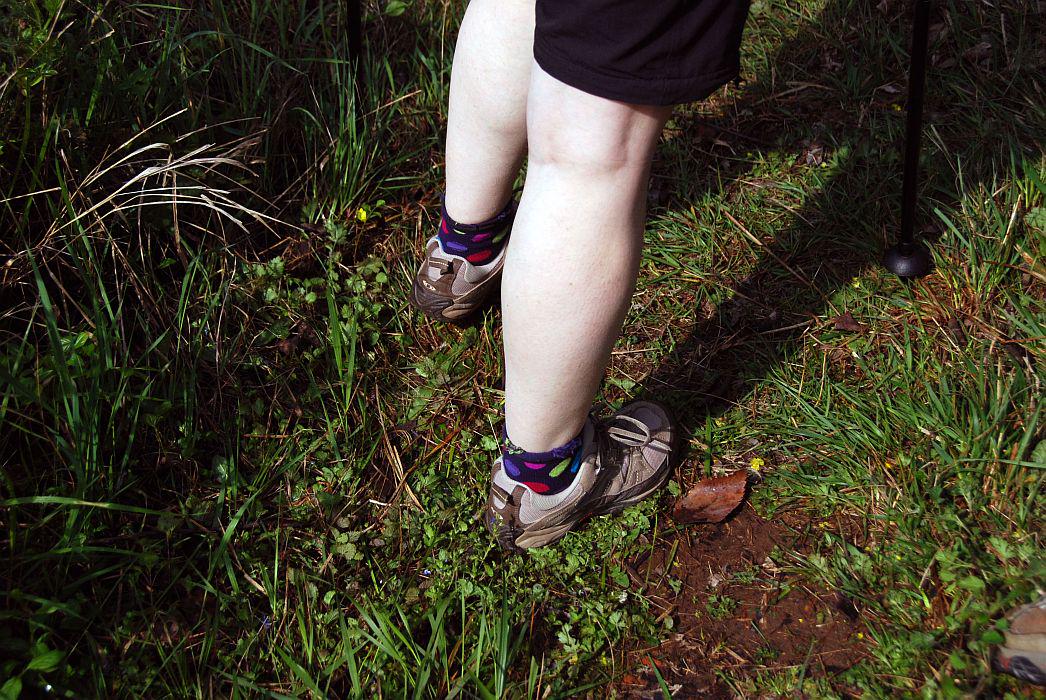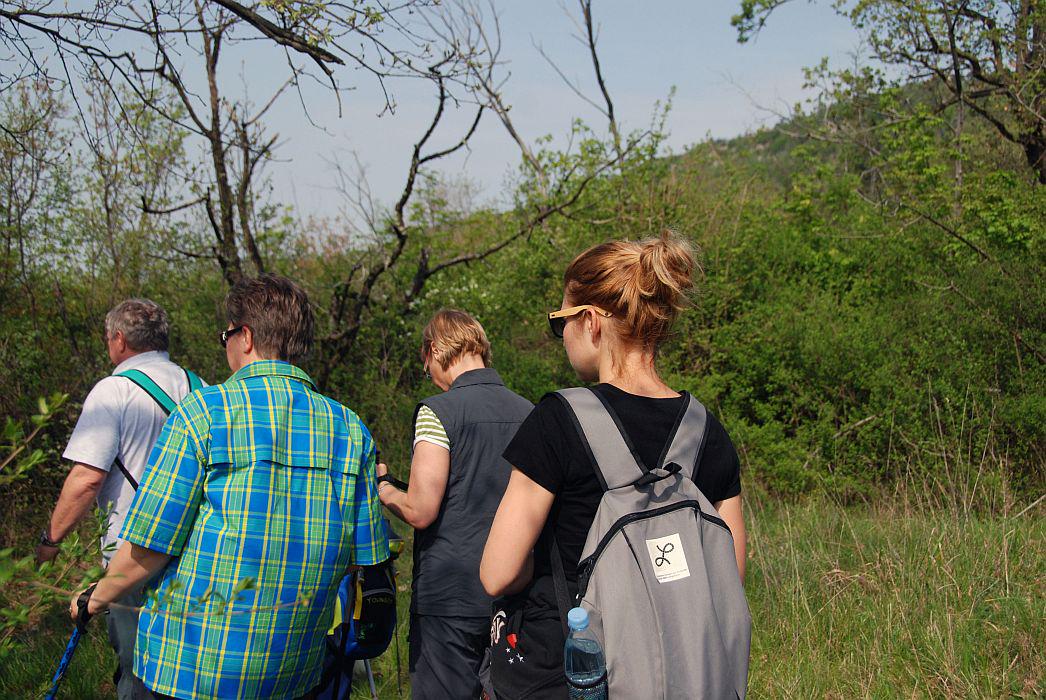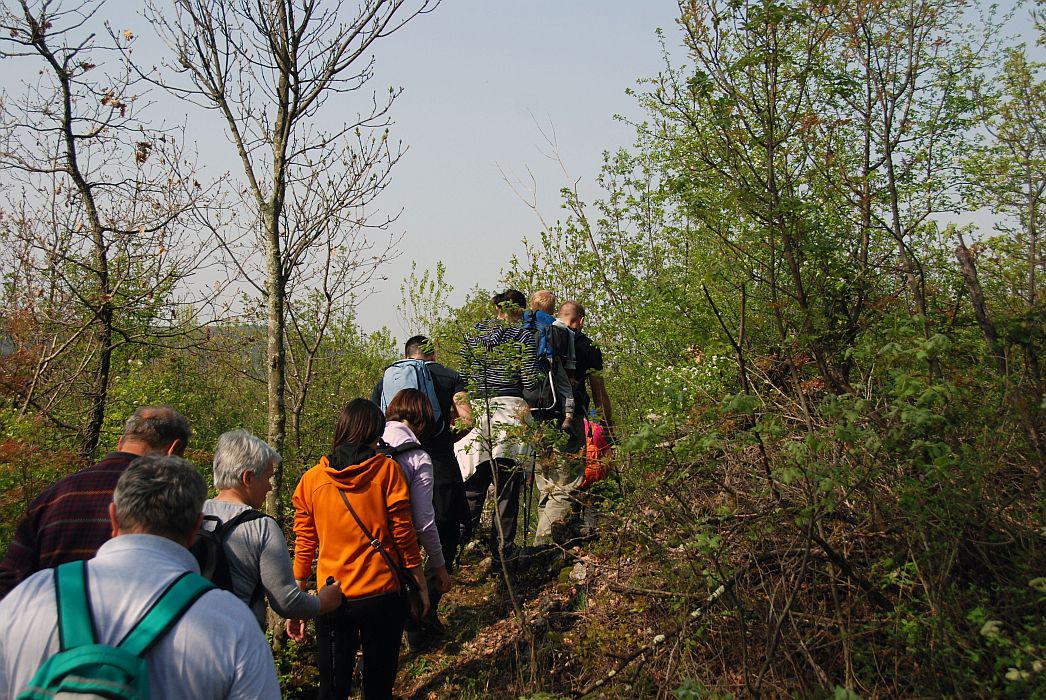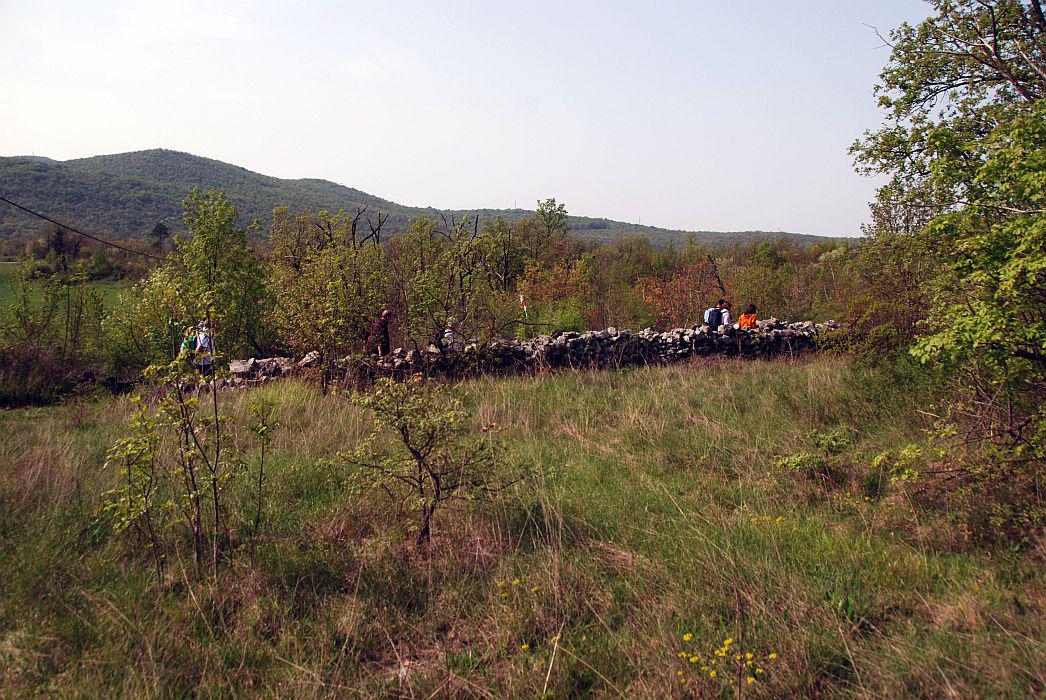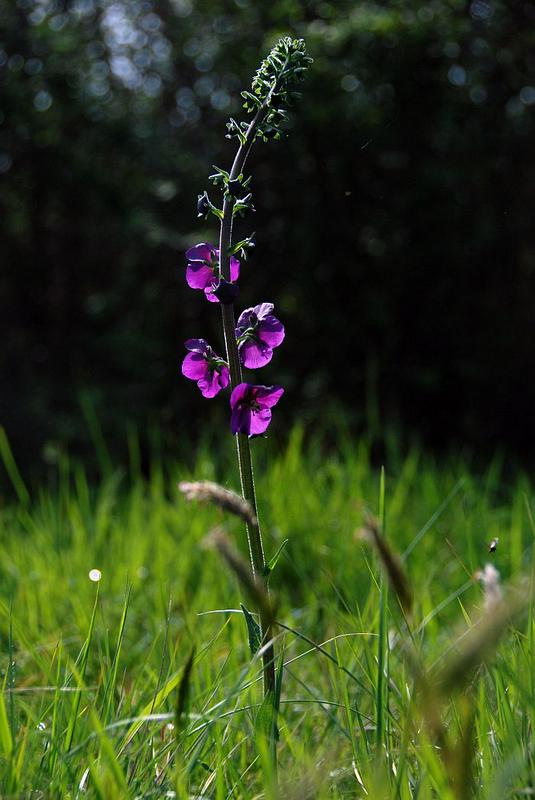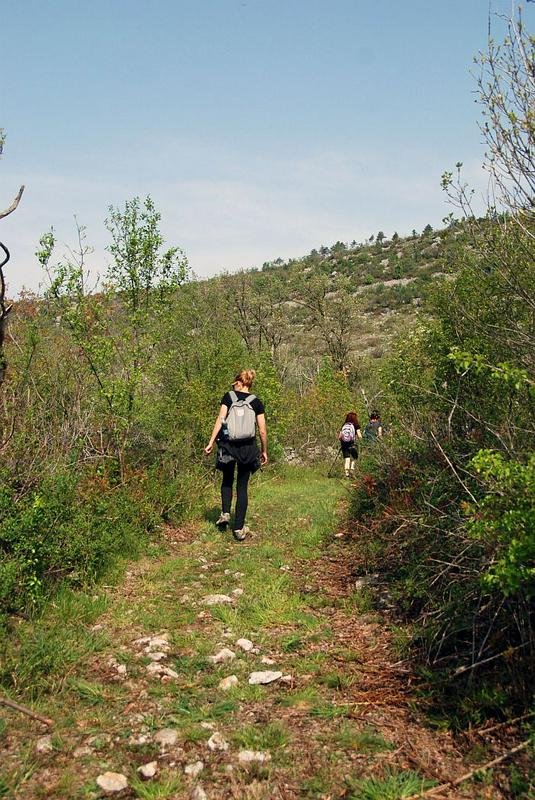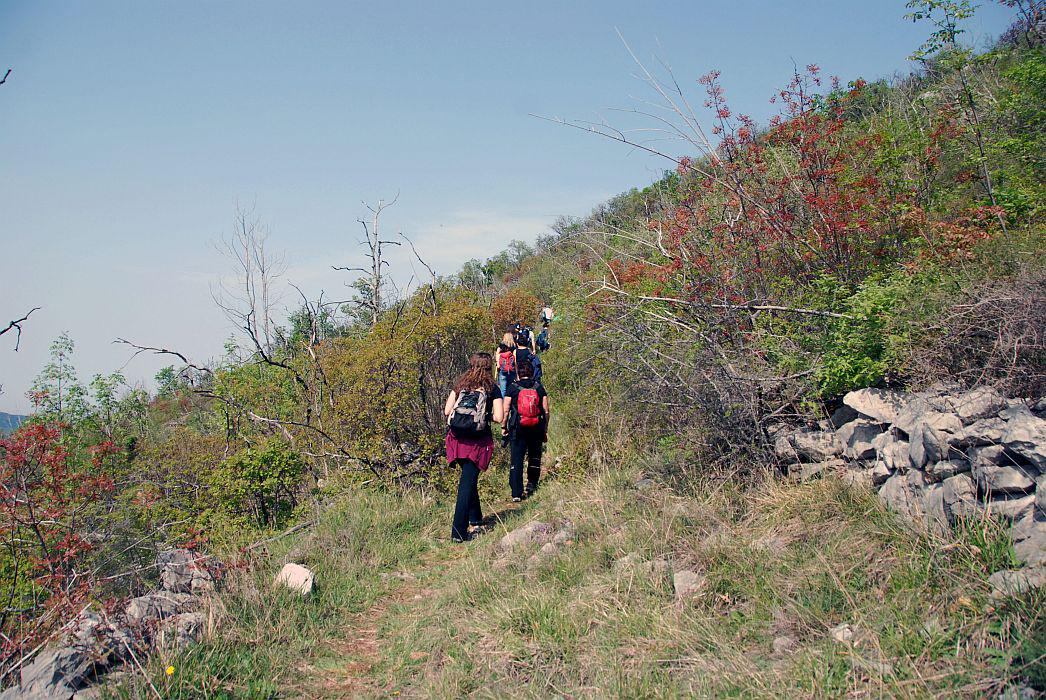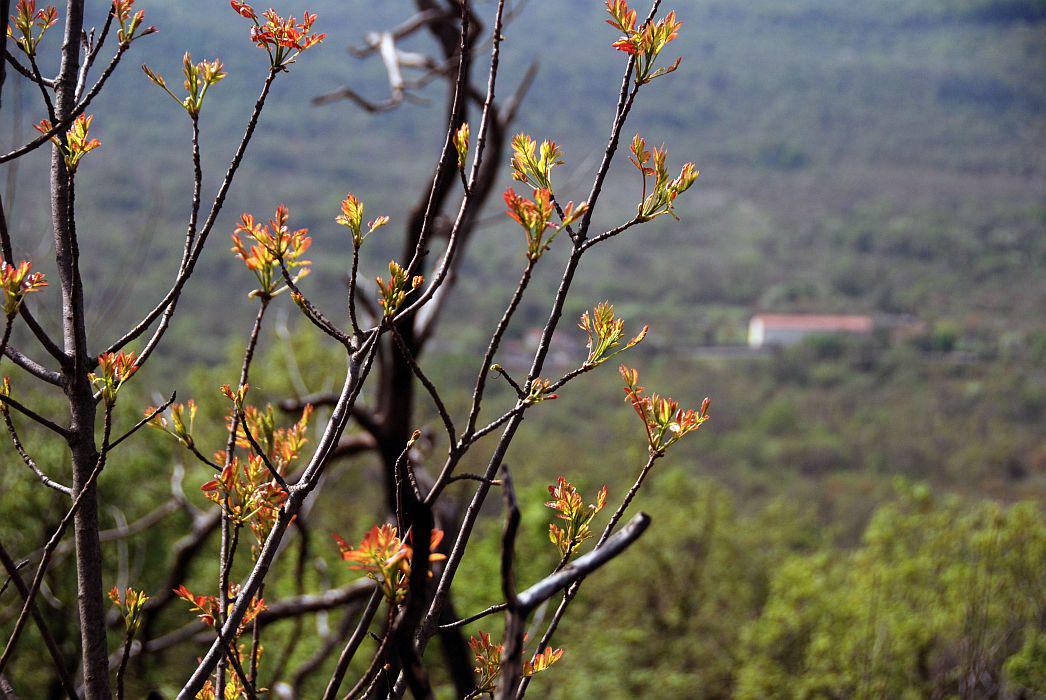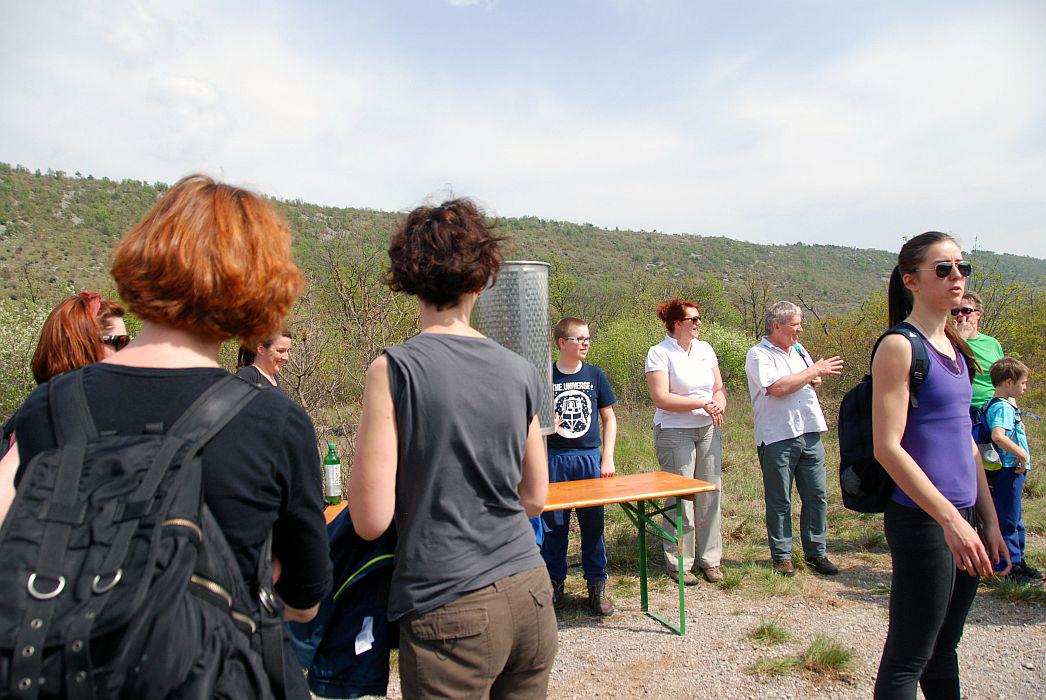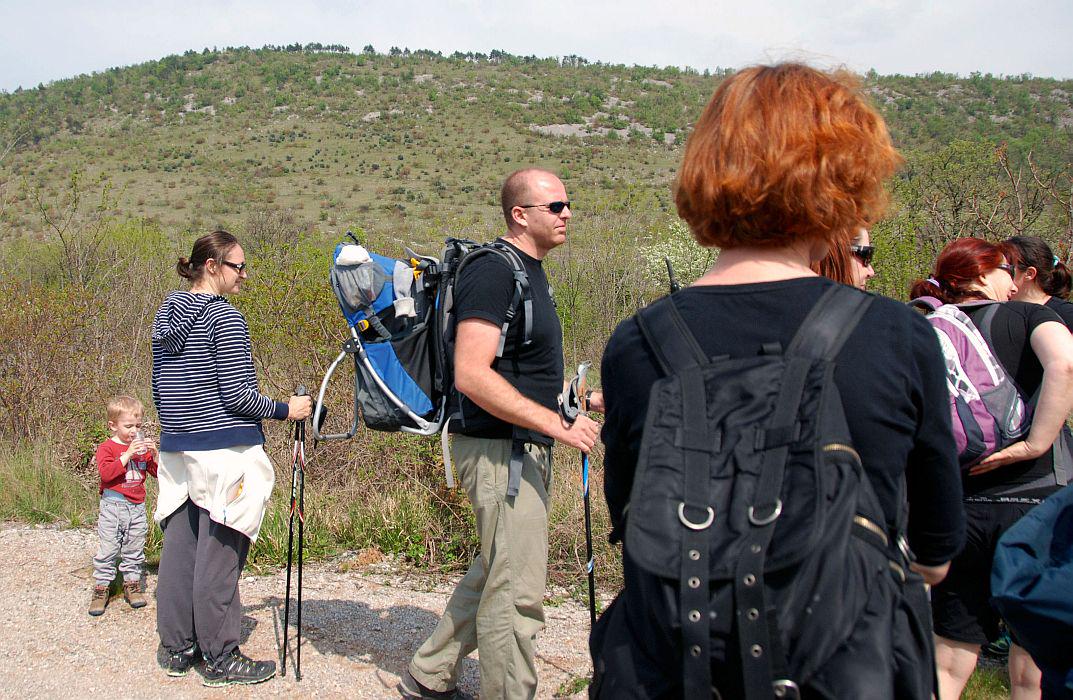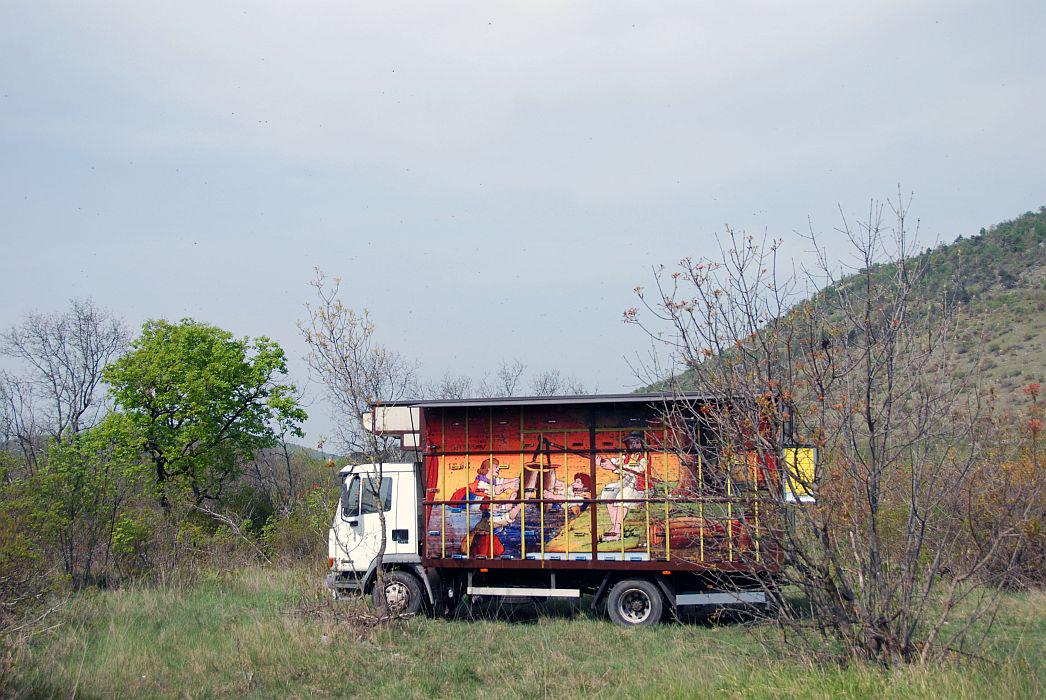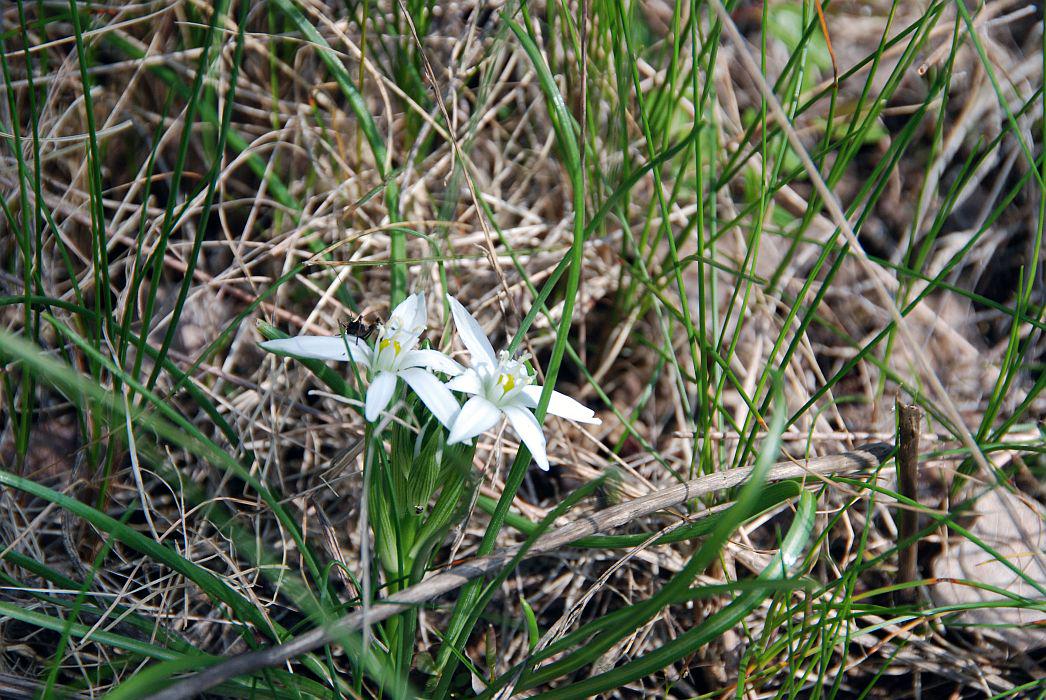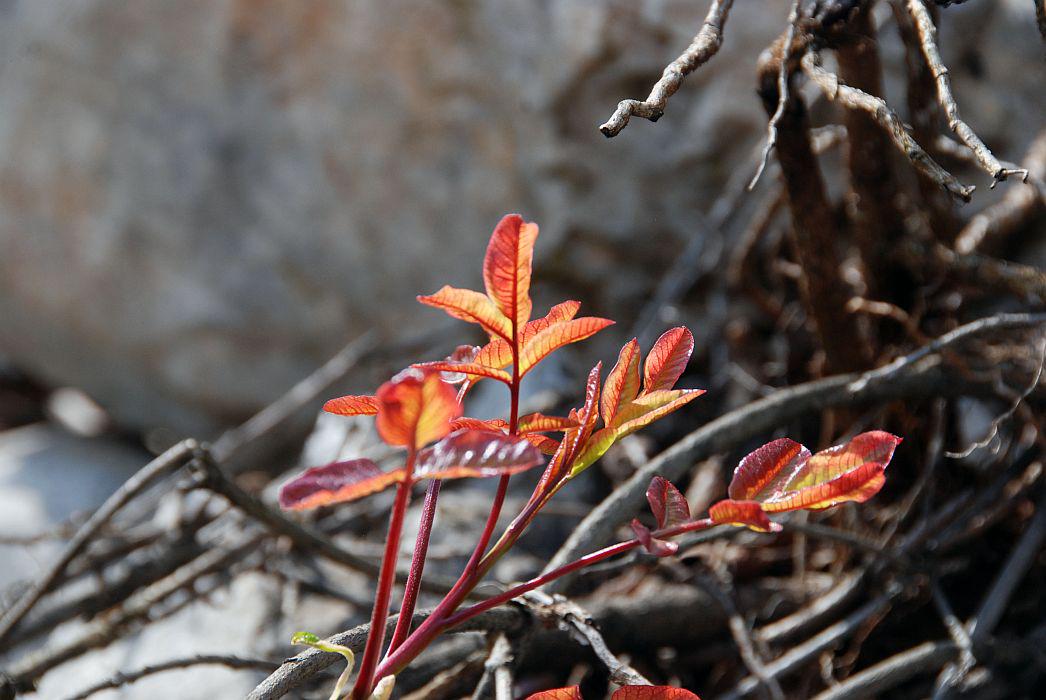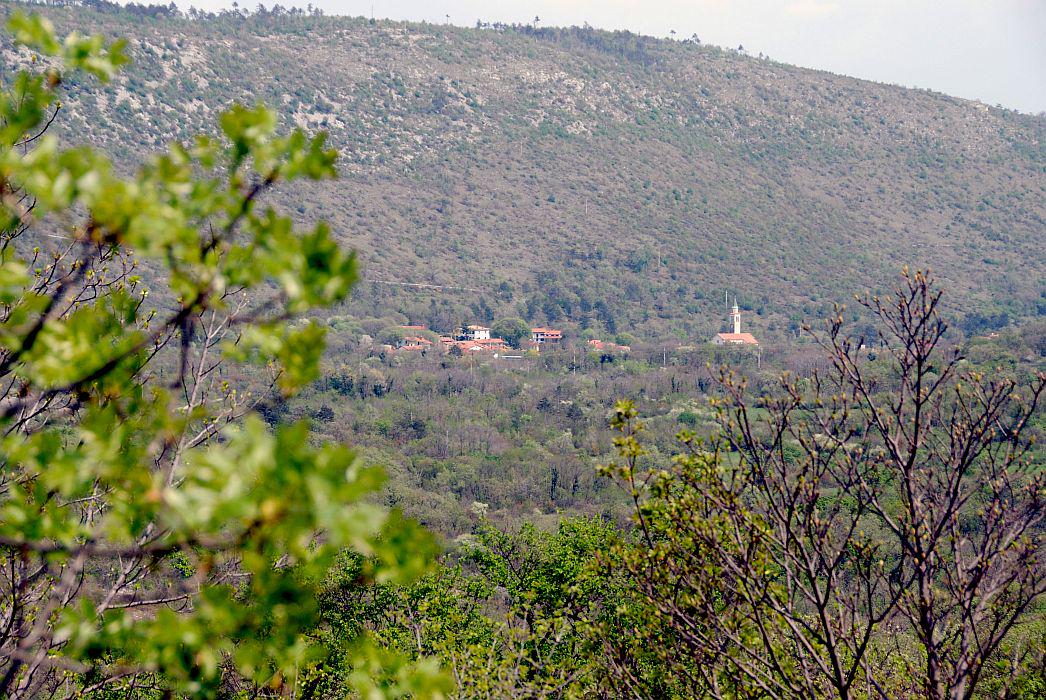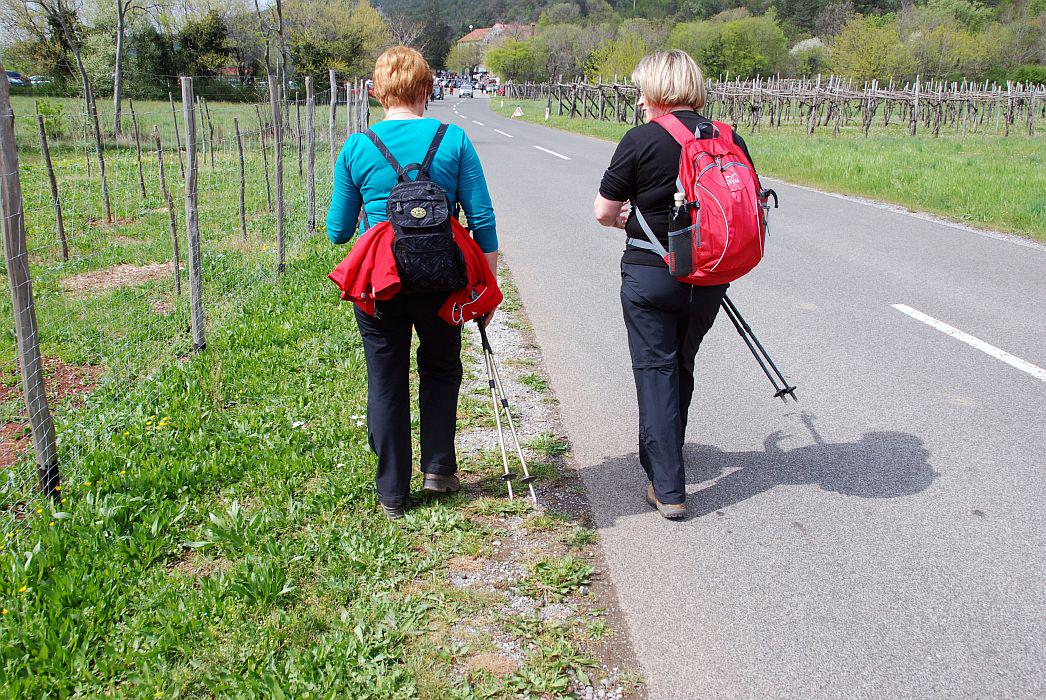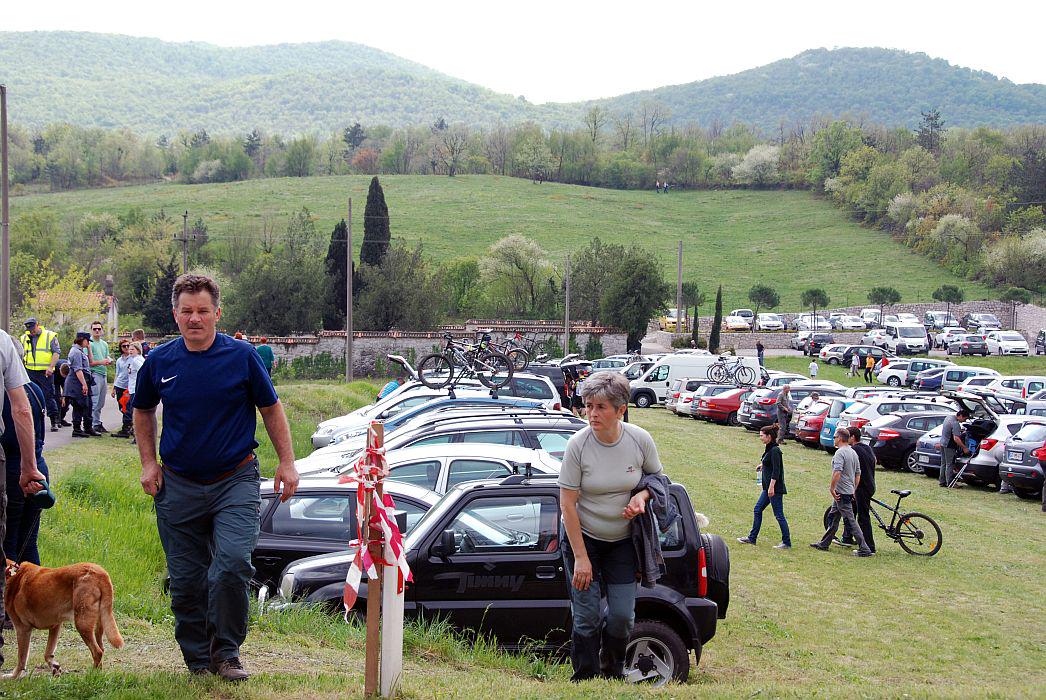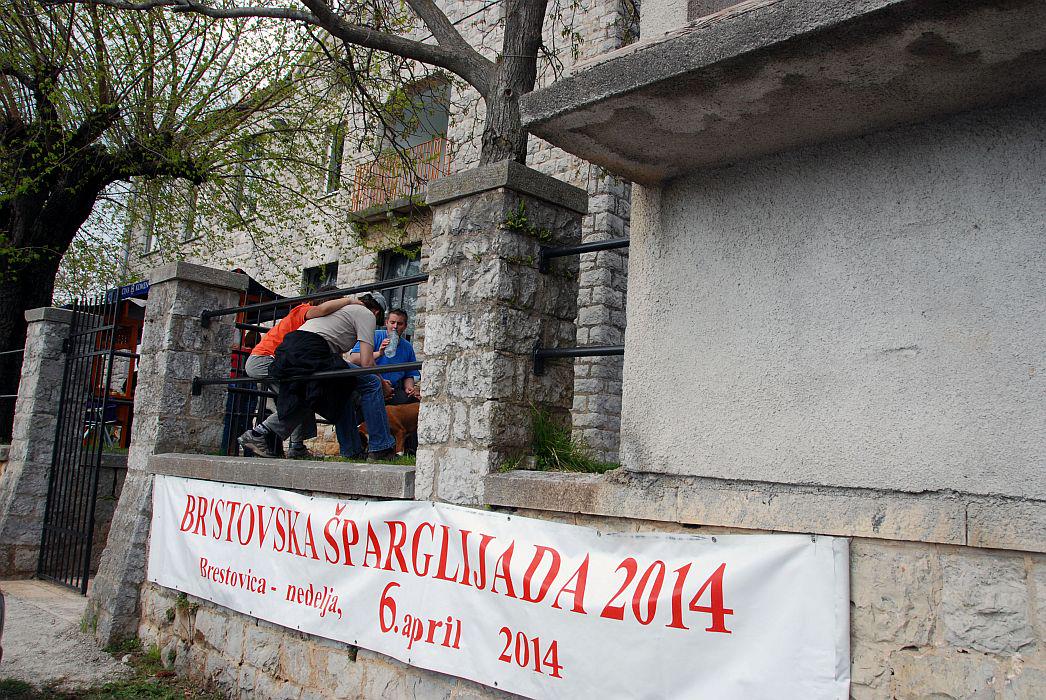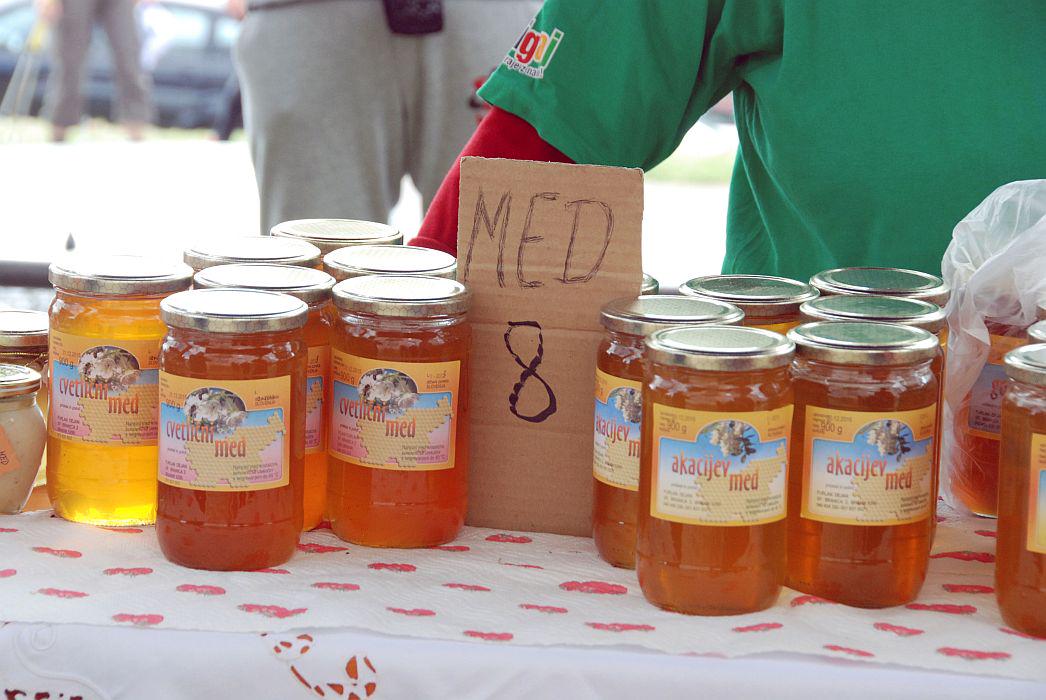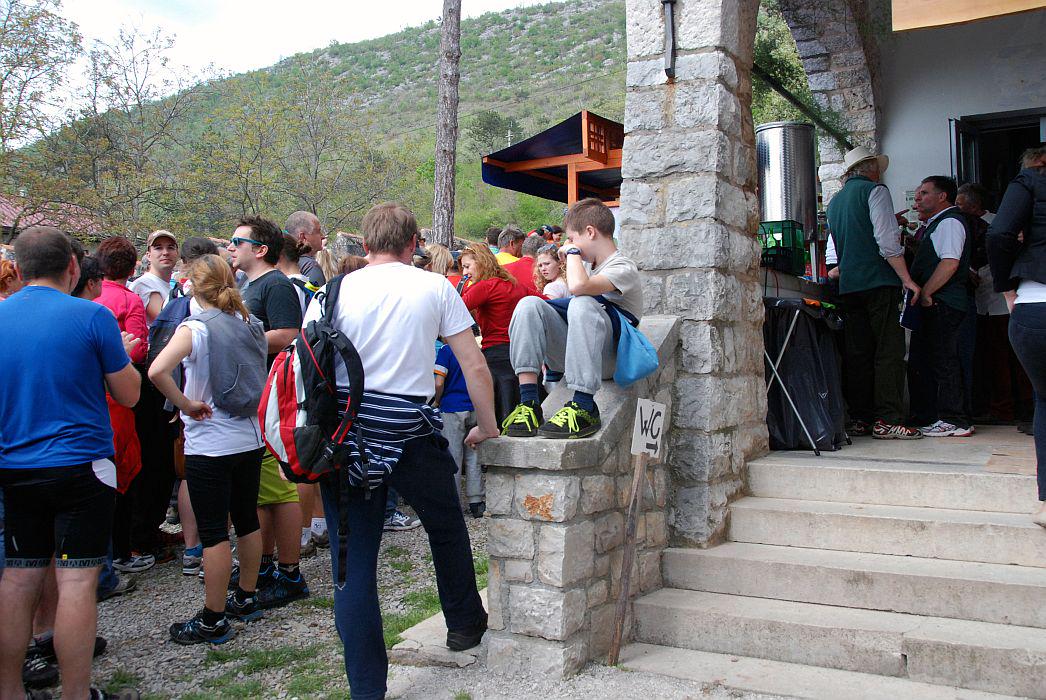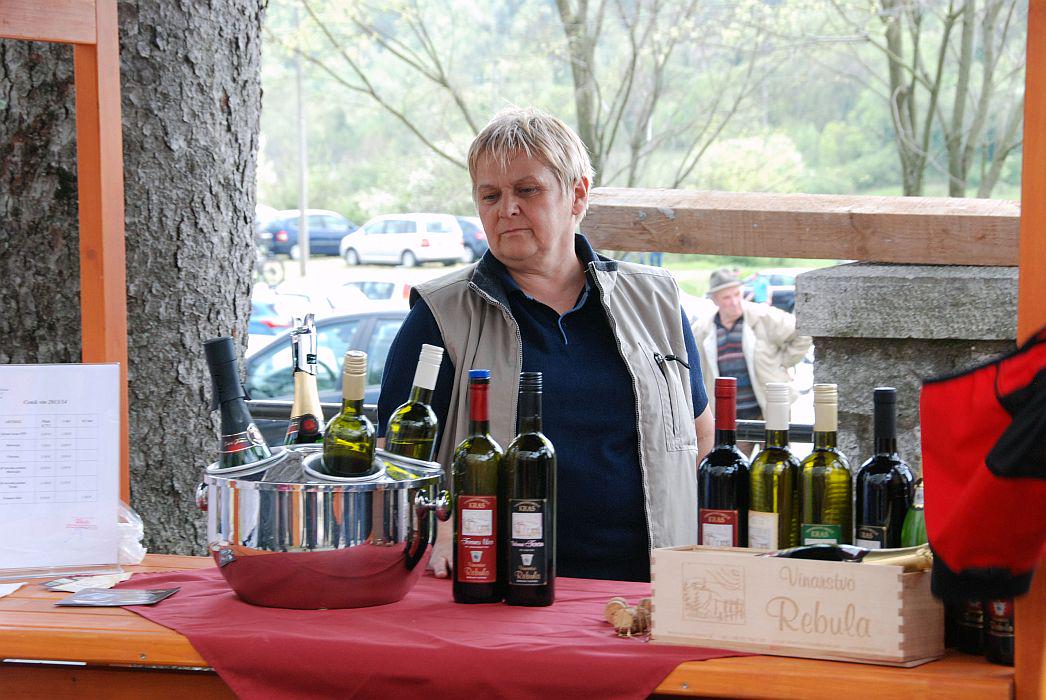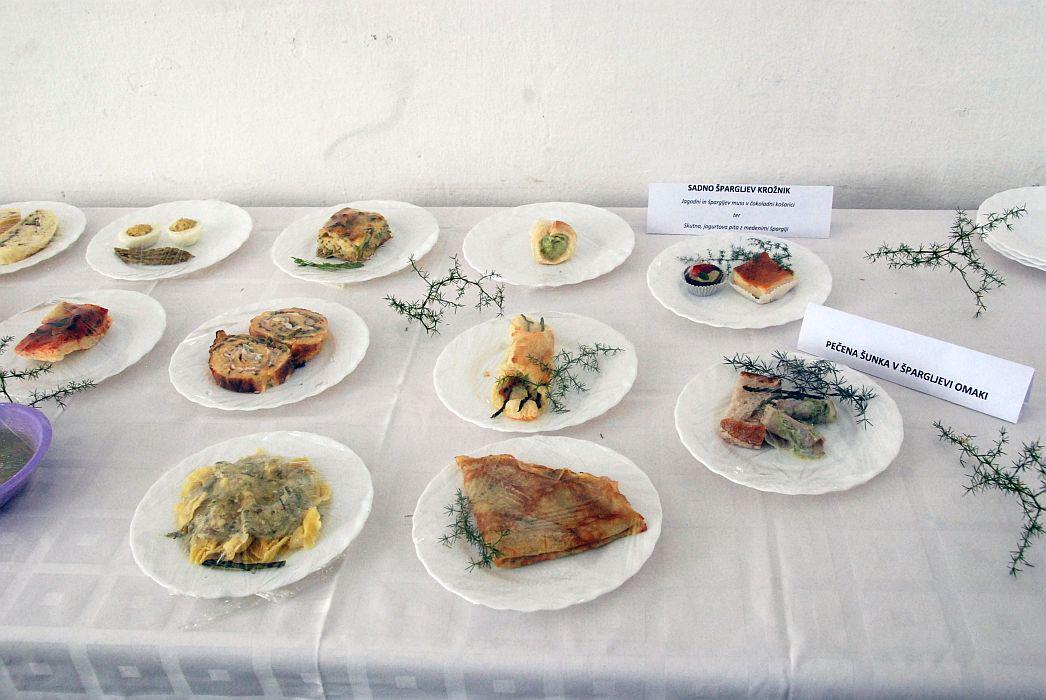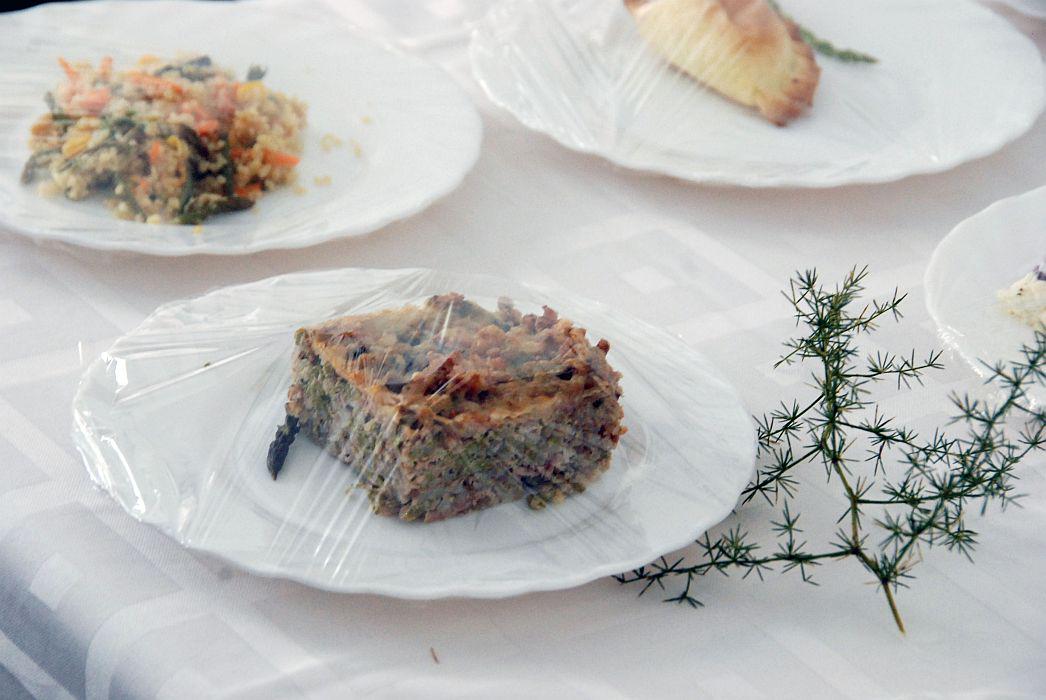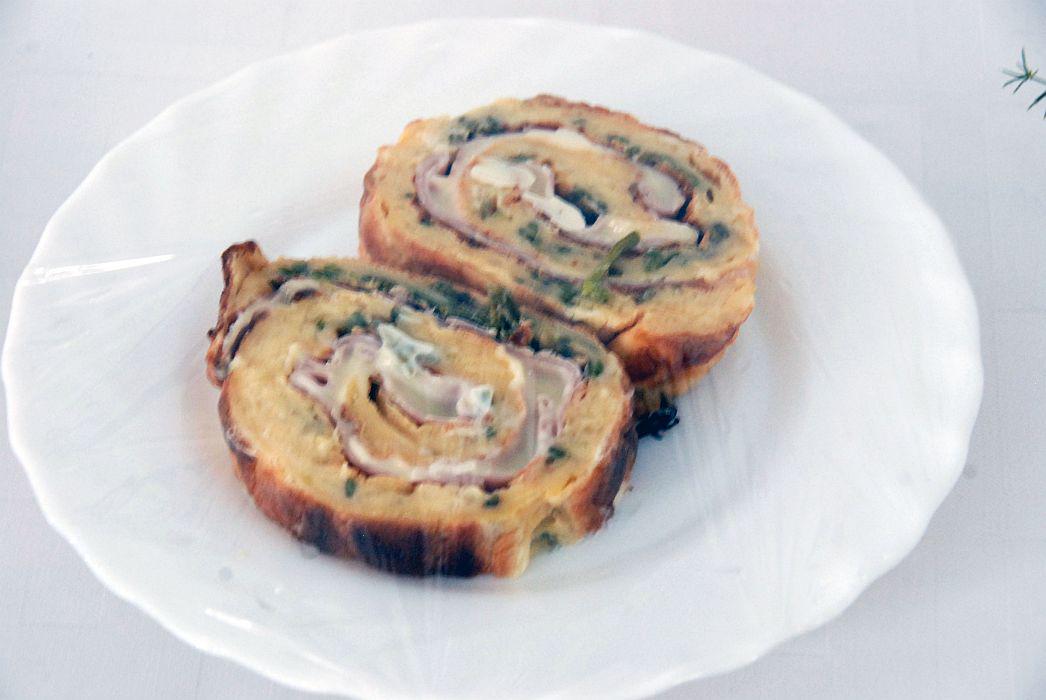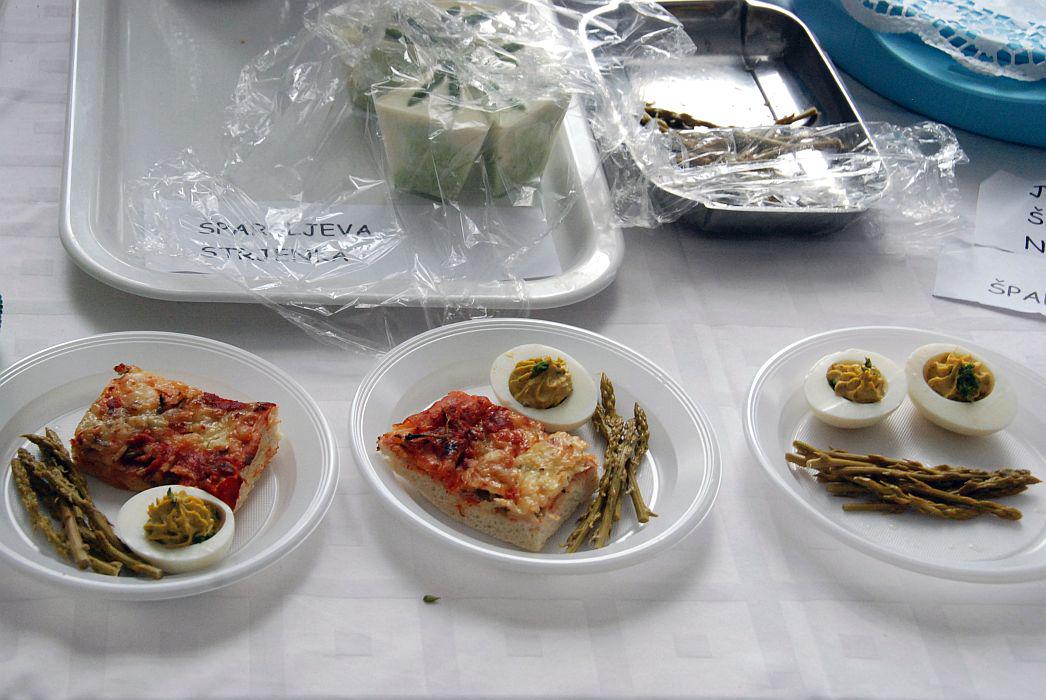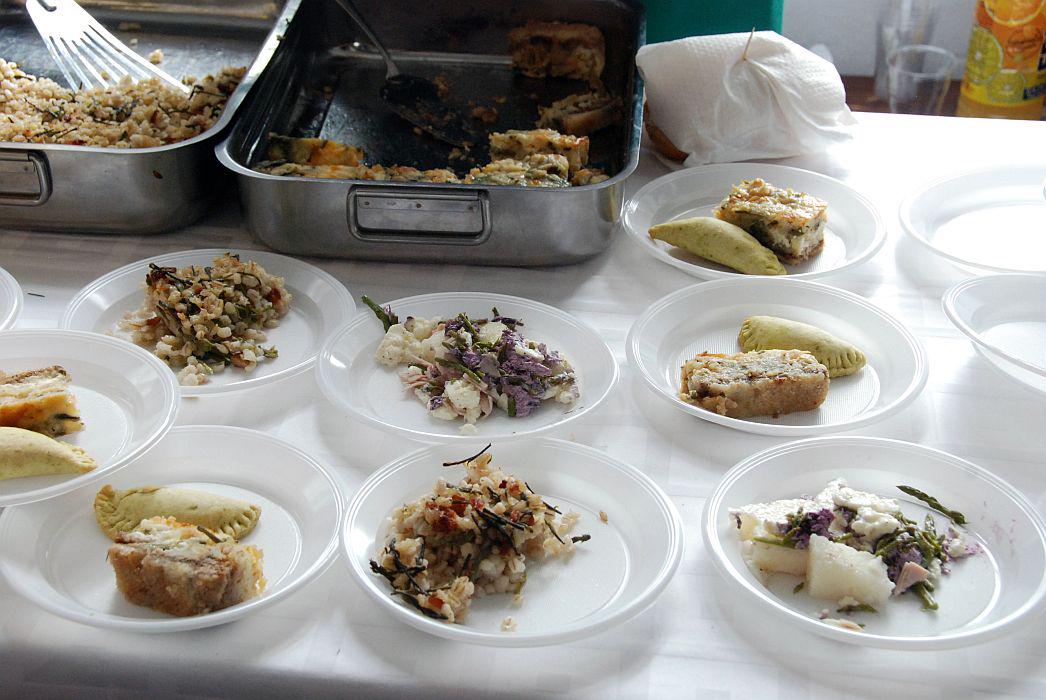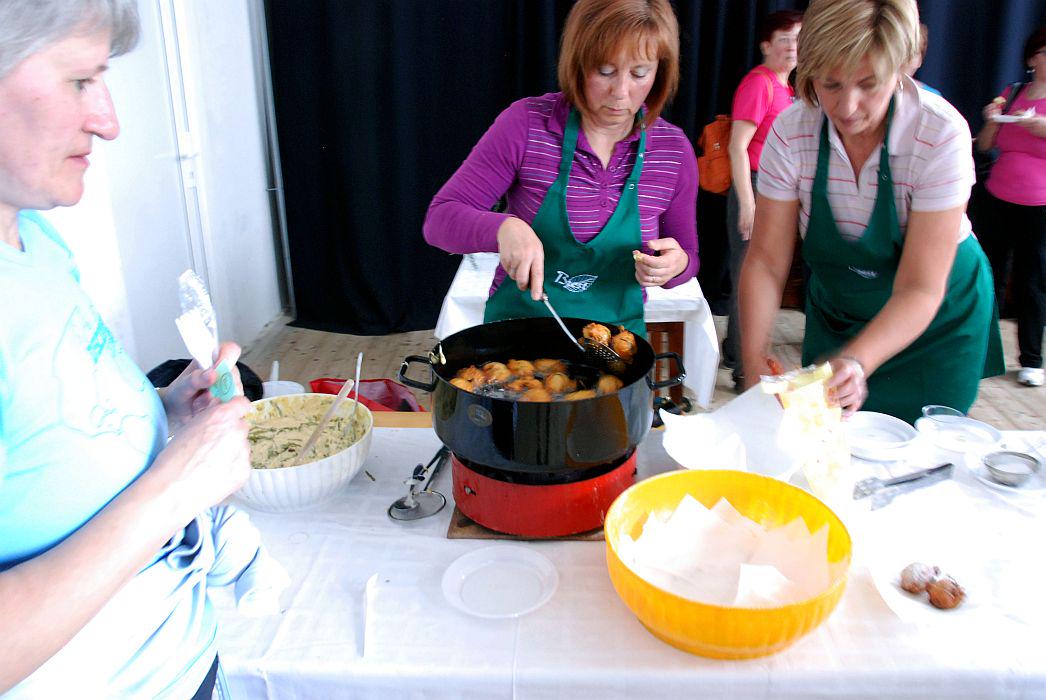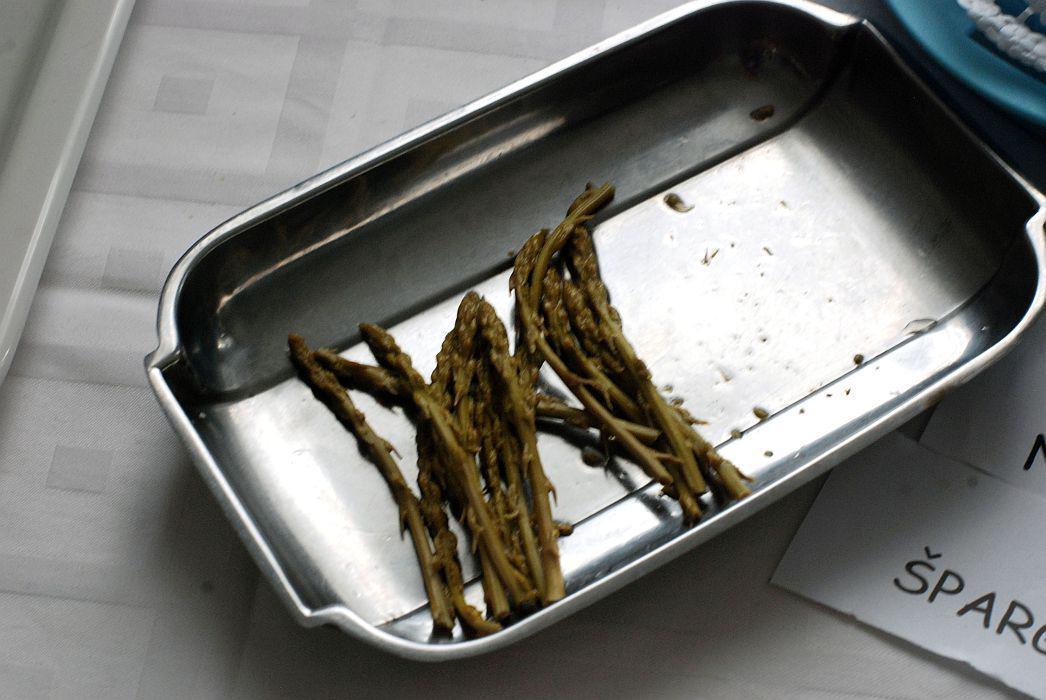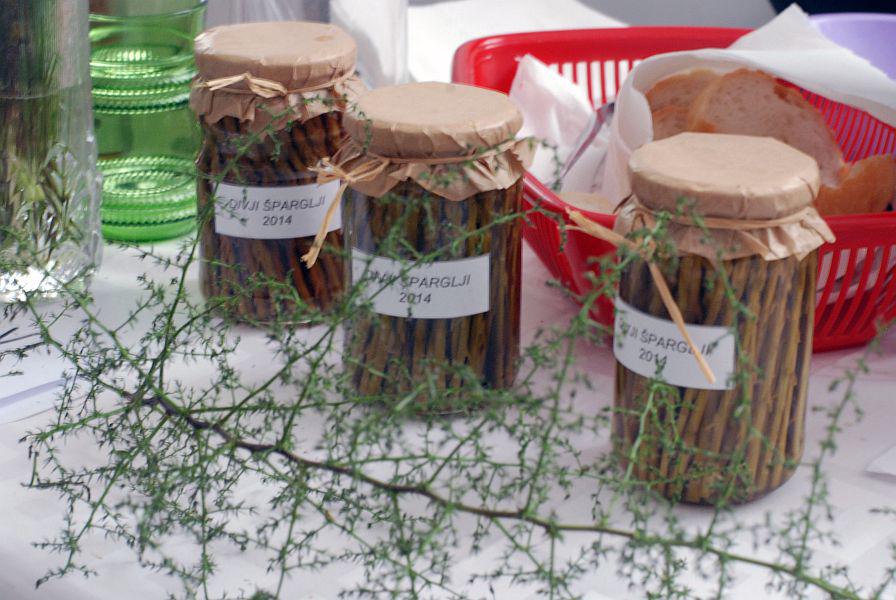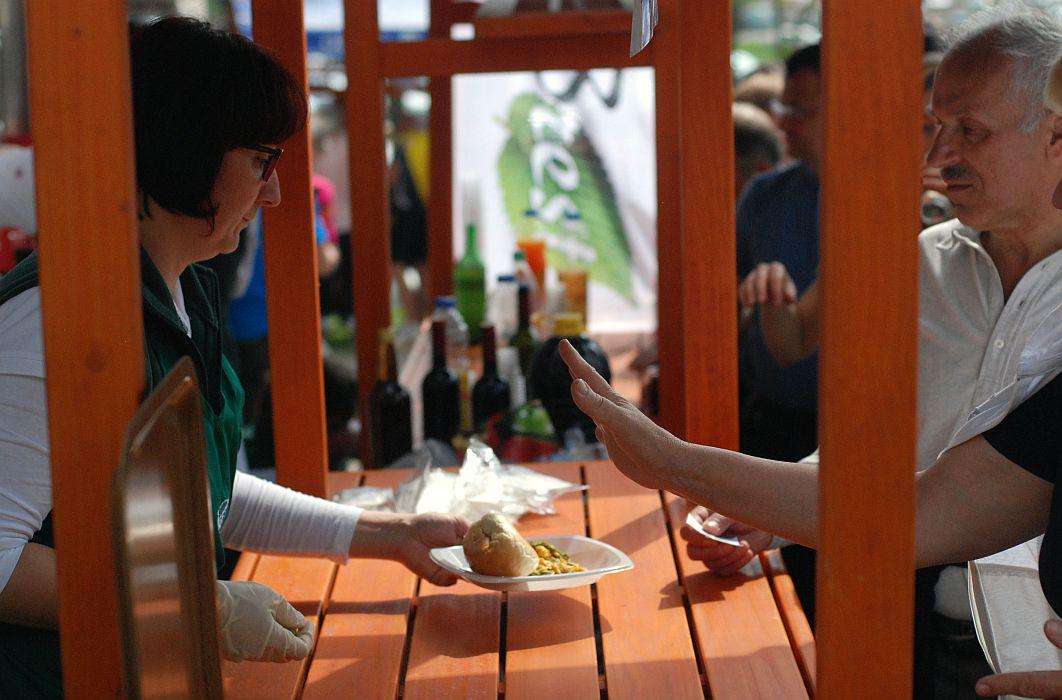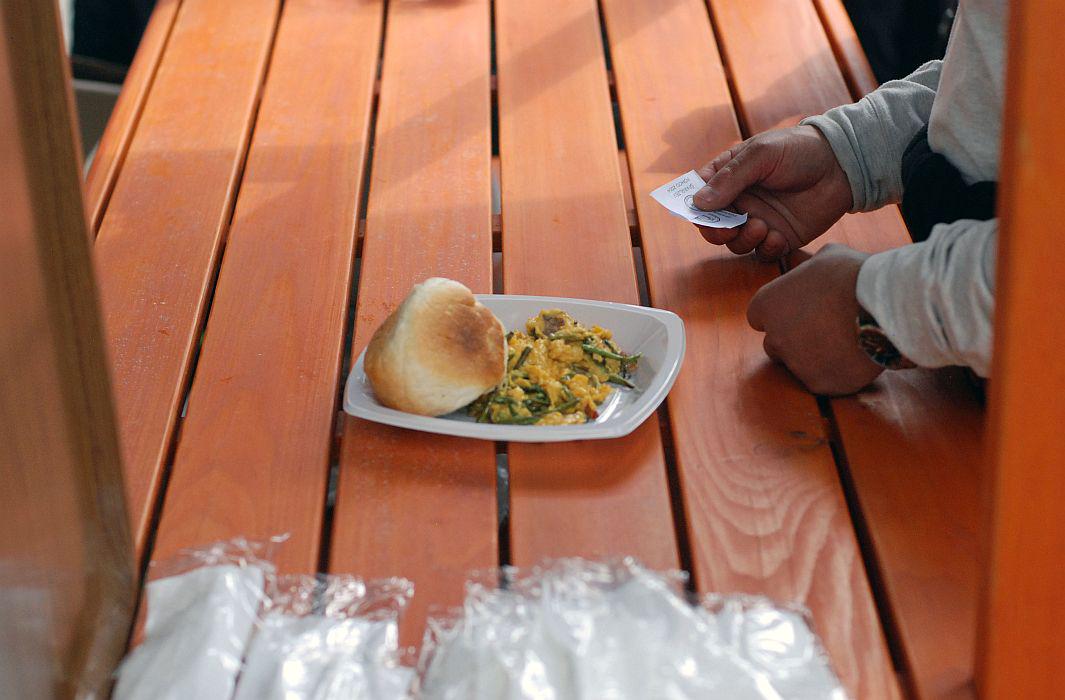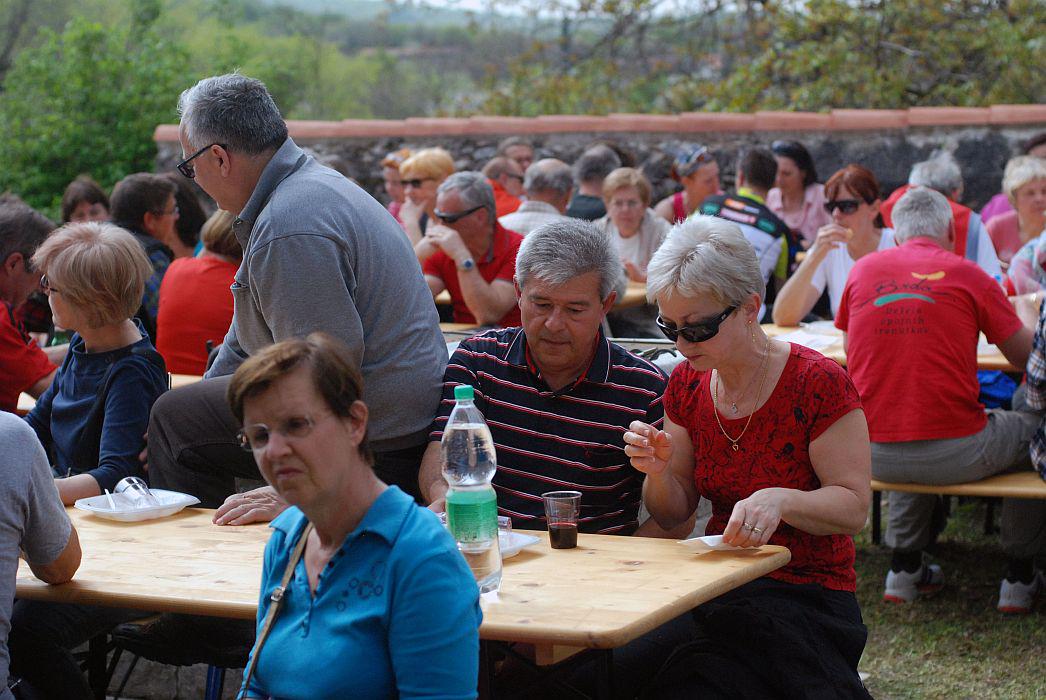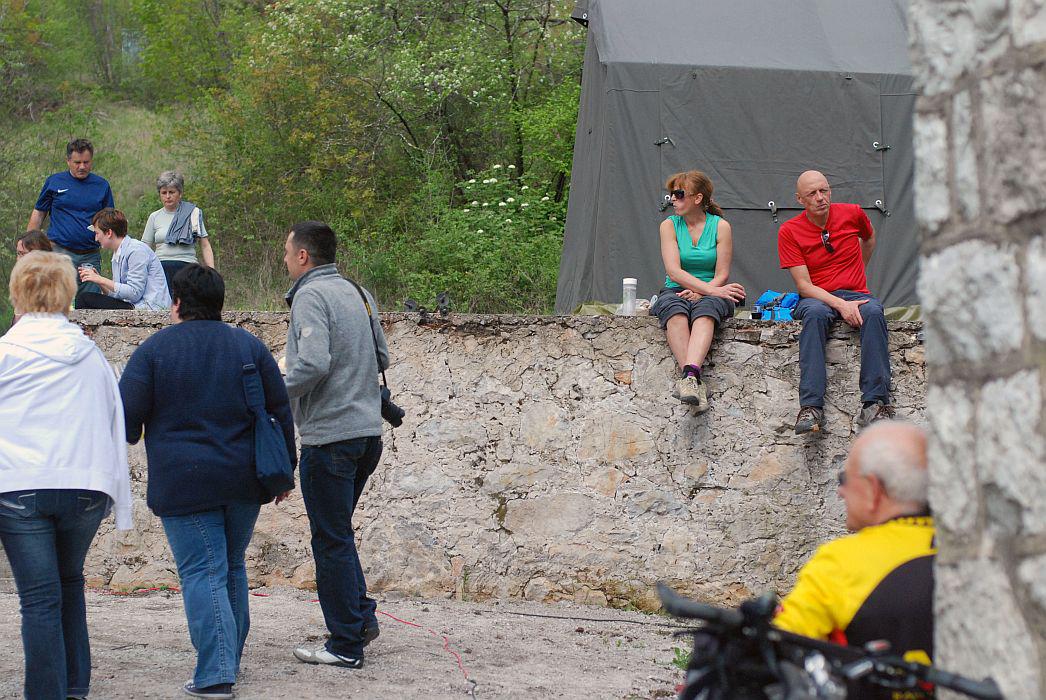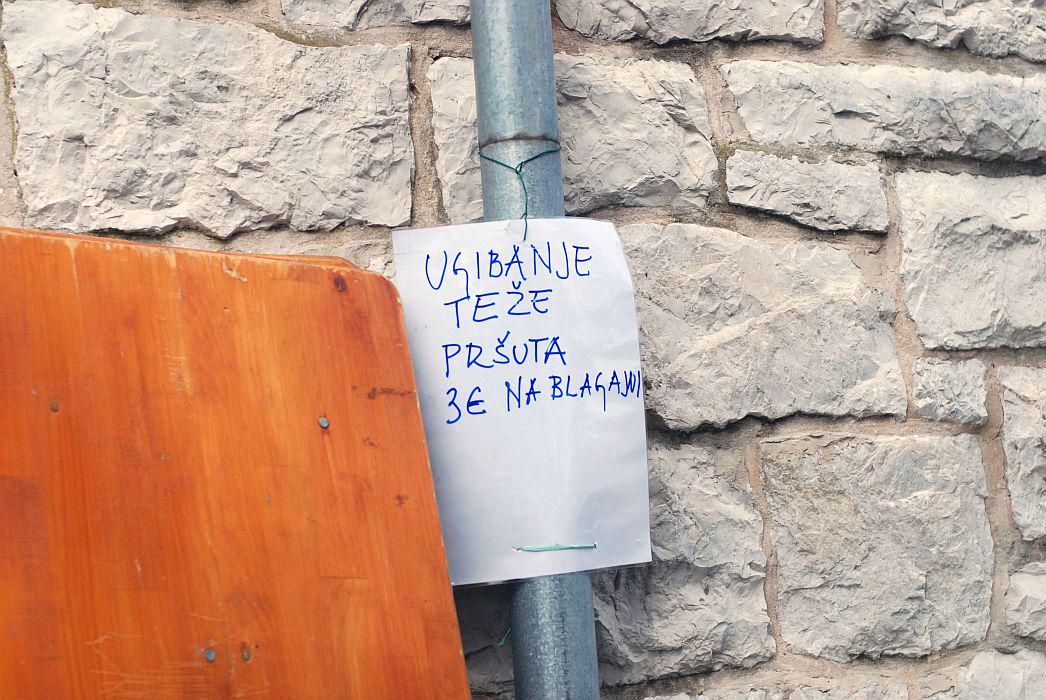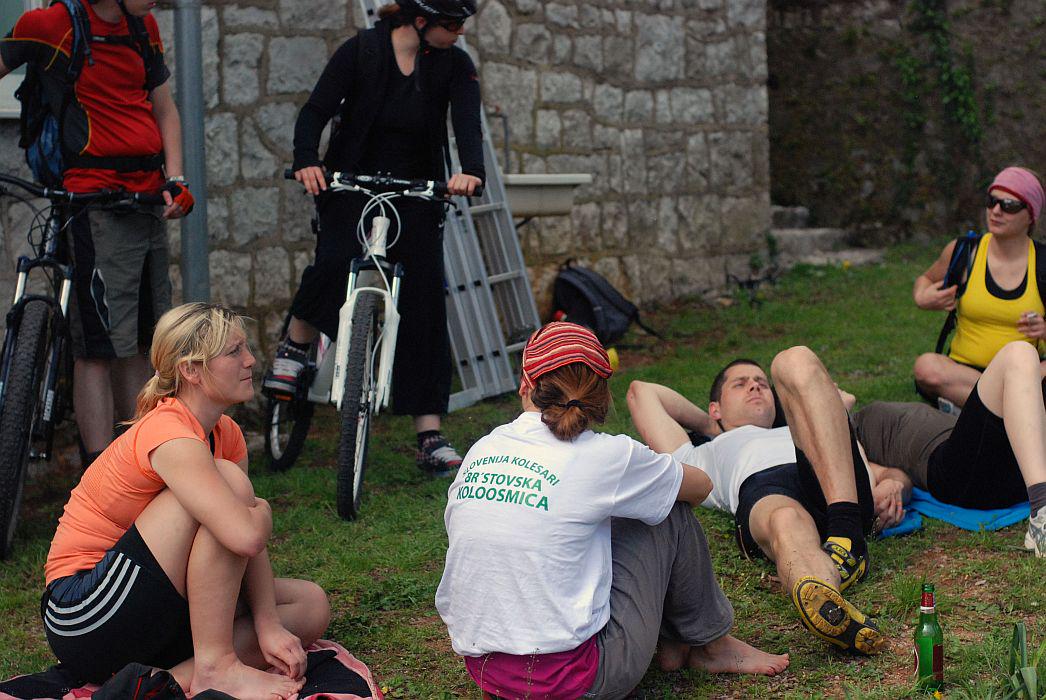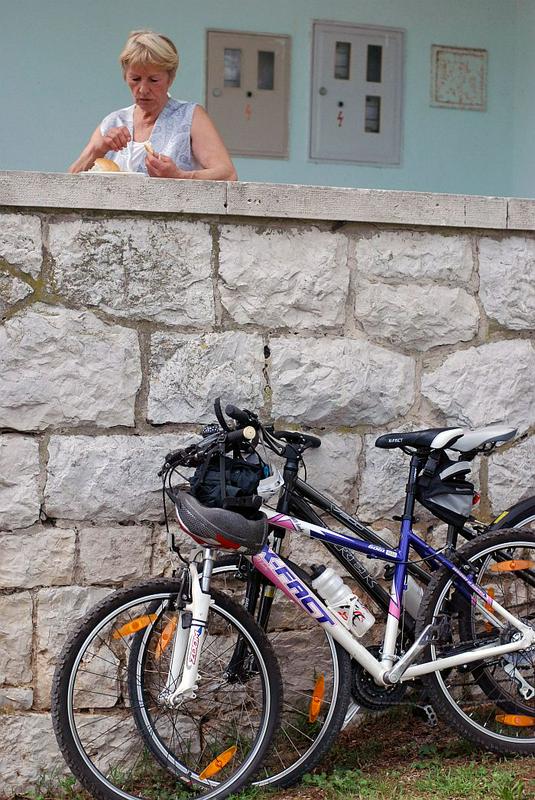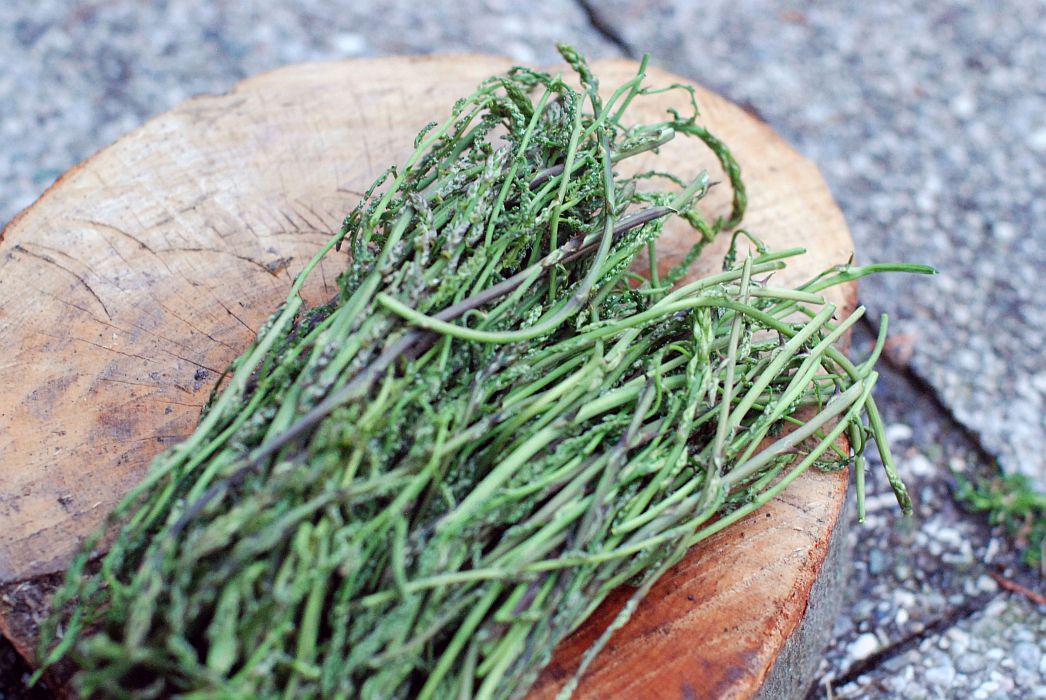

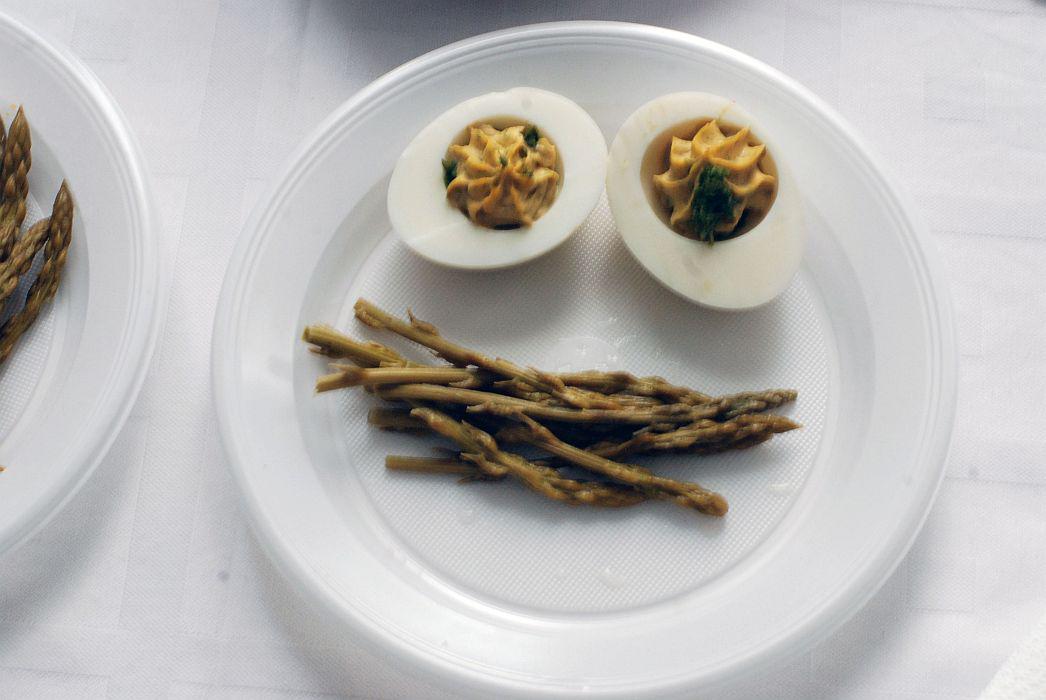
Every year, in the village lying near the border with Italy, the asparagus festival named ‘Br’stovska šparglijada’ is organised, as well as an asparagus trip, both attracting numerous nature-lovers and wild asparagus enthusiasts. Last Sunday, the event received a record number of visitors, presumably also due to beautiful weather. According to the organisers, over 1000 people went merely on a trip.
It was as early as in the morning, when masses of people arrived by cars and bicycles to the sleepy village of Brestovica pri Komnu, which was completely devastated during the First World War. Now, in the immediate vicinity of the village, enthusiasts of history can go down the paths of the Isonzo Front.
A three-hour-trip (12 kilometres in length) usually extends slightly, depending on how eagerly you leave a cart track and wander to karstic smoke bushes. But, it is just the right length to make trip goers hungry before the opening of the asparagus festival, at which numerous dishes are offered, prepared by the locals two days before the festival. Usually, over 100 kilogrammes of asparagus are picked for the preparation of the festival’s specialities.
Crowned king and queen
Among the dishes prepared were asparagus panna cotta, asparagus ‘štruklji’ (t/n: rolled dumplings with various fillings), asparagus roulade, asparagus lasagne, as well as asparagus moussaka, risotto and pasta. In a big cooking pot, asparagus ‘miške’ or mice (t/n: fried dumplings made of yeasted batter) are being fried in hot oil, and on the next table, there are asparagus with chocolate mousse and strawberries. The locals of Brestovica also pickle wild asparagus and make asparagus liqueur.
The dish that was overwhelmingly prepared was ‘frtalja’ with asparagus and pancetta (t/n: ‘frtalja’ is a thicker egg omelette with herbs, vegetables or dry-cured meat). The hikers washed it down with a glass of Teran or Rebula, the Slovene wines which were sold at the stalls, along with Karst honey and sheep’s cheese.
Visitors to the festival also tried to guess the weight of the hung prosciutto, and attended a ceremony at which two best pickers were proclaimed king and queen of the Brestovica asparagus and received coronets made of asparagus. Local people say that asparagus which grow on the slopes of the Brstovski dol valley can only be found in this part of Slovenia. Nonetheless, Brestovica is not uselessly called a sunny village, as this is one of the places in Slovenia with the highest number of sunny days in the year. It’s been a long time ago since the sun last blazed down as at this year’s festival.
Asparagus month in the Slovene Karst
The festival is merely an introduction to the month of asparagus, which takes place in the Slovene Karst, this year between 11 April and 11 May. During this time, selected inns and restaurants in the Karst will offer special menus with wild asparagus.
Picking of wild asparagus is not really an easy task; however, despite all the difficulties pickers face while crawling over thorny scrubs and the awkward karstic terrain populated by snakes, asparagus picking is worthwhile for many. The wild asparagus is an extremely healthy plant with a distinctive taste, which is slightly bitterer than the cultivated asparagus.
Asparagus was much valued for its good qualities also by the ancient Romans. Experts recommend it for various dietary treatments and for alleviating problems with urethrae or kidneys. It encourages body cleansing and detoxification. It is an excellent antioxidant, and it also has aphrodisiac qualities. Well, it’s time to visit the Slovene Karst!
Kaja Sajovic, translated by D. M.




















































